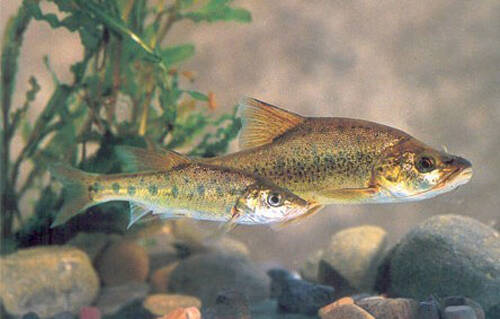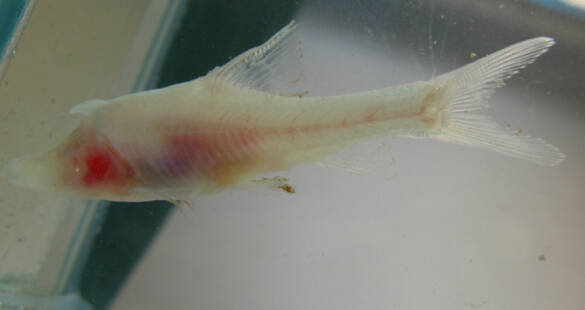The Latin name of Sinocyclocheilus is Sinocyclocheilus, which is a general term for fish of the Cypriniformes, Cyprinidae, and Sinocyclocheilus genus.

The young golden line barb mainly feeds on zooplankton and aquatic insects, and also eats a small amount of algae and higher plant fragments; the adult fish feeds on small shrimps and small fish, and also zooplankton.
The reproductive period of the golden line barb is from December to February of the following year, and the eggs are laid in gravel.
The genus Golden Line Barb is a unique genus of Chinese Cyprinidae fish. It was originally called the genus Golden Line Fish. This name is derived from the common name of the model species in the place of origin. Because it has the same name as the golden line fish genus Nemipterus Swainson, which has long been used in previous ichthyological literature and is marine, it was once renamed the genus Balo Fish (Wang Youhuai 1979; Wu Yunfei, Lu Keqiang 1983), but it was not widely accepted. The current name is a revision of the "Chinese Fish Systematic Retrieval", which takes into account the original name and indicates the affiliation of the subfamily, so it is more reasonable and usable. In the past, this genus only recorded one species, which was differentiated into three subspecies, distributed in three lakes in eastern Yunnan.

The transparent golden line barb has not yet become extinct, and its traces can still be found, but its number is rare and it is endangered. The local government and relevant departments have strengthened publicity and protection, and prohibited the release of other fish and creatures in the cave, so that this precious natural heritage and rare fish species left by nature to mankind for thousands of years can survive forever.
Due to reasons such as reclamation of lakes, water pollution, careless introduction of species, and overfishing, most of the original fish holes along the lake have been blocked, and the destruction of the habitat has led to the depletion of its population resources. It is rarely seen in lakes such as Dianchi Lake.
Listed in the second level of the "List of National Key Protected Wildlife in China".
Protect wild animals and eliminate game.
Maintaining ecological balance is everyone's responsibility!